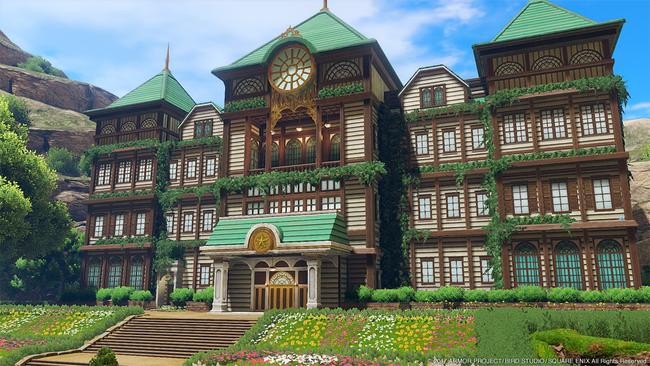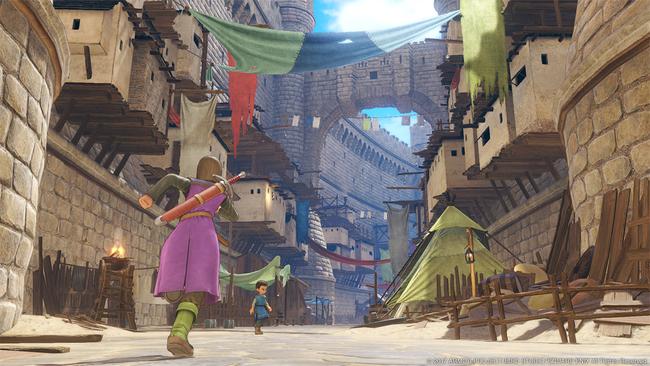Dragon Quest XI dev team created a prototype of Dragon Quest III for PlayStation 4
Dragon Quest XI: In Search of Departed Time will be released very soon in Japan on July 29 for PlayStation 4 and Nintendo 3DS, and both Weekly Famitsu and Dengeki PlayStation magazines have put up extensive interviews with top staff members of the highly-anticipated RPG in Japan.
One of the interesting points found in both interviews is that Yuji Horii’s team had constructed a prototype of Dragon Quest III on Unreal Engine 4 to help visualize the PlayStation 4 version of Dragon Quest XI. We would like to focus on this subject for this article.

First, we have translated Famitsu’s interview with Yuji Horii himself, along with the producer Yosuke Saito and director Takeshi Uchikawa.
Horii: Actually when we were making DQXI, although just for experimenting, we tried constructing a DQIII using Unreal Engine 4.
Famitsu : Eh!?
Uchikawa: At the very start of development, even though none of the story or characters for DQXI had been decided yet, we were in a situation where we wanted to inspect the game engine. And there when we consulted with Horii-san about “wanting to do an inspection work by using a past DQ world,” he advised us “In DQIII, Aliahan’s continent has a full set of castle, town, village, cave and more, so wouldn’t it be the most suitable for testing?” So there we tried creating DQIII for inspection.
Famitsu : Does that mean you tried putting up a hypothetical DQIII on PlayStation 4?
Saito: Of course it’s just for testing, so it doesn’t mean we created the entirety [of DQIII] though.
Horii: We probed thoroughly on what we can do on DQXI while looking at that DQIII.
Famitsu : Is such inspection work of creating a past title as-is a common work?
Uchikawa: No, I haven’t heard much about it.
Saito: The game engine was to be used for the first time ever in the DQ series, so rather than creating it while fumbling, it’d be better if we could test it out with a past title.
Uchikawa: By having that DQIII, the staff members can again share the factors that make a DQ, so I’m glad about that.
Horii: By the way, the white speech balloons that show up when people are talking in towns are the things we’ve done by looking at that DQIII. Although I grasped it during the inspection, when I look at it [again] now, the original DQIII had rather few people in castles and towns. It was suitable for 2D maps at that time, but if we were to put that on 3D maps as-is, there’s only a sparse amount of people so it feels lonely.
Famitsu : There is a difference in the scale, so it may unnecessarily seem so, isn’t it.
Horii: That’s why we added more people in towns for DQXI, but in that case, it’d be tedious if you have to talk to them one by one. That’s why we created people who talk with white speech balloons so that you can gain information just by walking around without having to directly speak with them. We made people with white speech balloons to not have any more quotes than that, so you can just go past them.
Famitsu : So the inspection version of DQIII was also useful for creating that system. Did that DQIII end up being dismissed?
Everyone: ………
Famitsu : Huh!? (laughs)
Saito: I think it’d be good if we have the chance to show that DQIII to everyone (laughs).
Horii: In the end, it’s just made for inspection, so even if we are to show it, we cannot show it as-is though.

And we also have translated part of Dengeki’s interview which also included Hokuto Okamoto, the producer of the PlayStation 4 version. This version goes to explain further that they had even created detailed models of the key characters in Dragon Quest III.
Dengeki : I think one of the charms of the PS4 version is on exploring the thoroughly created fields and towns, but how did you produce this?
Uchikawa: When we were producing DQXI with Unreal Engine 4, we first did a technological inspection. We chose DQIII’s Aliahan as the subject, and we created what could be considered as a PS4 version of DQIII to inspect the looks and technologies [that can be implemented] in PS4. We showed that to Horii-san, saying “The image of DQXI in PS4 would look like this,” and we fine-tuned the ideas together. In the prototype version, other than models of the obvious Hero and his Mother, we also created the likes of Warriors, Monks, and Mages. And we also created the Aliahan Castle and its town to inspect the breadth (size) of the map.
Okamoto: We also created the King in an unnecessarily high quality.
Dengeki : We would really like to see that (laughs).
Saito: In the end, this is made just for inspection as a foundation for the PS4 version, so we didn’t do anything more like optimization or making it faster.
Uchiyama: That’s right indeed. After that, we immediately gathered points of reflections from the test version and moved on to producing the PS4 version of DQXI as-is. When we looked back at it, we spent so much time and labor on the prototype version, but we also harvested much from it, so the contents were so exciting indeed.

Dragon Quest III, which is subtitled And into the Legend… in Japan and The Seeds of Salvation in the English release, was originally released for NES in Japan on February 10, 1988, and in North America on March 12, 1992. It was also later released for SNES but only in Japan on December 6, 1996.
It is worth noting that even though it has been ranked 2nd in Famitsu’s recent poll for the Best RPG of all time, Dragon Quest III still has not received a full-blown remake on subsequent generations; even the Japan-only Wii Virtual Console release on September 15, 2011, and the iOS & Android versions that have also been released worldwide on December 4, 2014, are based on the SNES version. So we can only imagine how massively the fans of DQIII will react when Square Enix does turn this PS4 remake into reality.